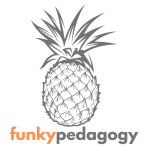Every time I’ve got to the dark revision days of late April, I’ve toyed with completing an exam paper alongside my Year 11s- mainly as a way of encouraging them when they’re flagging, but also because I know it would be the best AfL tool ever. After two years of the GCSE English course, any Year 11 class would relish the opportunity to criticise their teachers’ work.
I’ve never got round to it though. Partly because you’re always overloaded with work at that time of year, partly because it’s boring, and partly because it’s hard.
So it sounds ridiculous to say that somehow I’ve managed to write a whole novel as a way of encouraging my students to engage in their creative writing. Even now I can’t quite account for how it happened, except that one day I was modelling the plan for a piece of creative writing, which led to me modelling the opening paragraph, which led somehow…..to me writing the actual thing.
When the current GCSEs were introduced, it was clear we needed to teach creative writing in a different way. The change to the 100% exam structure, and the importance of creative writing to the English Language papers meant that many of the strategies I’d been using before were no longer proving as effective. The intense bursts of creative writing which I’d slotted into the course occasionally in between the other, weightier units of preparation for the Literature papers were no longer enough.
So I started teaching creative writing largely by writing alongside my students. They enjoyed seeing my mistakes, as well as how I solved them. It showed them how I rewrote, and how I would develop settings and characters. I still had to plan my lessons just as I would have done before- I just planned the paragraph I was going to write in front of the class instead. Initially I used the strategy more as an AfL tool, based around the ideas of whole-class feedback. Instead of marking students’ work in a traditional sense, I would look at their writing and identify common errors. I would then write the class a paragraph of my book filled with those errors, and fixing them simply became students’ starter activity for the next lesson.
I don’t claim that my teaching is anything new. We all know the importance of modelling, and this is just that, albeit on a larger scale than is common. The unique and unusual feature of me writing alongside my students is simply that it led to the surprising fact that I now have a novel published: Jelly was published by ChickenHouse over a year ago.
What is not so obvious is the effect that it had on my students’ progress. Aside from the GCSE assessment criteria, it’s hard to judge quite what is meant by ‘success’ in writing. My school was mixed ability, and the year I wrote Jelly our students did attain results which were well above national average in their English Language GCSE. Within the GCSE papers, their best question was the creative writing component in which they attained significantly higher marks than any previous year group. On paper, that seems like enough to gauge success.
I would go further, however. That year group became the most engaged and enthusiastic writers I’ve ever taught. I’m obviously incredibly lucky to have had a novel published, and it’s an absolute honour to have had the opportunity to write alongside my students. But I am amazed at the positive impact it had on them. It may be the case that they were just a particularly enthusiastic cohort: but I still get students from that year emailing me their ‘novels’, handing me (or performing!) their poems as I pass in the street, or even just thrusting interesting descriptions into my hands. We gained more extracurricular writers amongst that group of students than I’ve had in the whole of the rest of my teaching career so far.
The promotion of ‘Reading for Pleasure’ has become an accepted and valued goal in schools, and teachers in all subject areas are encouraged to talk about their reading habits with students. As adults we often do read for fun, and it’s accepted that showing this will have a positive effect across the curriculum.
But I think it’s worth considering what would happen if we actively promoted Writing for Pleasure in the same way. Mostly, as adults, we don’t associate writing with fun and relaxation. Reports, essays and emails are not something we always enjoy. But on a daily basis we, as adults, probably spend as much time creating words as we do consuming them. Perhaps it might be worth showing this to students and letting them watch how we write- if not for pleasure, at least as a necessary part of our daily lives. Writing is a process, not a finished product; it might be interesting to see what would happen if we emphasised this to students, by showing them the practical importance of our own writing.

